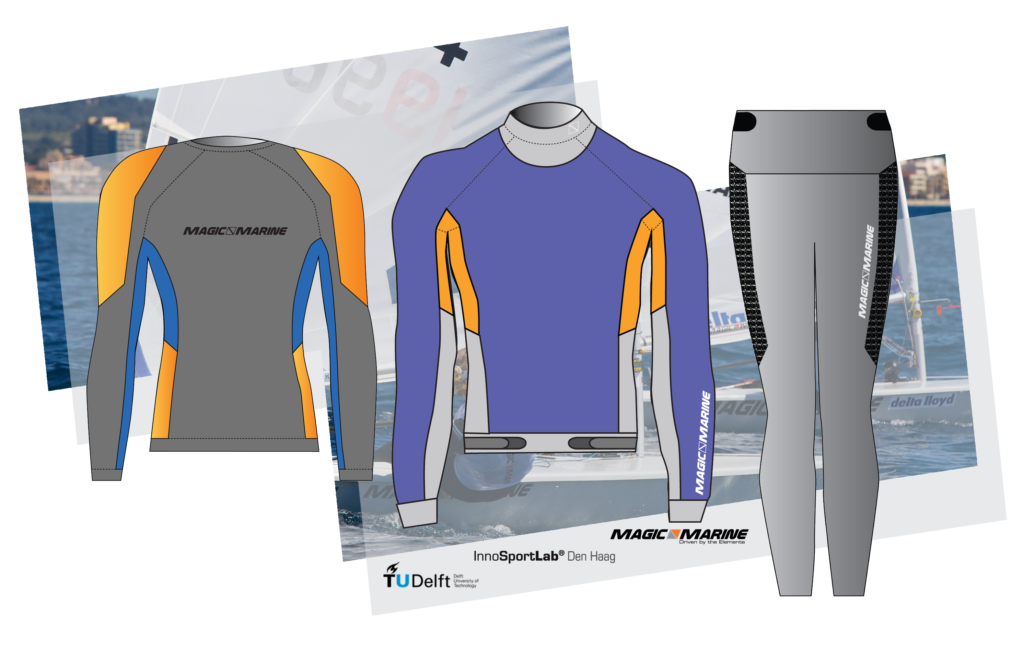
Sailing gear, optimized for thermal comfort
In a sailing match, sailors face varying environmental conditions and exercise levels. Especially the single-handed dinghy sailors experience a very large difference between the upwind and downwind legs, affecting their thermal comfort. Thermal comfort is linked to the athlete’s performance both on a physiological and perceptive level and a ‘sweet spot’ can be identified in which performance is optimal.
A new set of sailing gear is developed to regulate the heat exchange with the environment. The gear is optimised using a thermal model, made in MatLab Simulink, which enabled simulation of sailors in varying race conditions. To regulate heat exchange the suit featured a.o. phase change materials, acting as a buffer to dampen thermal shock, and adaptive breathable textile, spurring moisture transport through suit when needed.

Basic setup of the thermal model, analogous to an electrical network
The model and design were made for the master thesis “Thermal Optimization of competitive sailing gear”. The thesis was graded a 9 and awarded with the International Sports Engineering Association (ISEA) Student’s prize 2013.
The thermal model is described in the paper “Thermal simulation of a dinghy sailor” by J. J. Joustra and A.J. Jansen, 2014.
The project report “Thermal optimization of competitive sailing gear” is available from the TU Delft Educational Repository